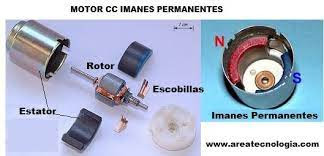THE MENSTRUAL CYCLE
1) CLICK ONTO HERE TO LABEL THE FEMALE REPRODUCTIVE SYSTEM←
2) Why Do Girls Get Periods? | Menstruation video
3) Read pages 40 and 41 in your Natural Science book.
4) Answer the following questions:
a) How long does the menstrual cycle last?
b) Name the parts this process consists in: ___________, ___________, ____________
c) In which part of the menstrual cycle:
- is there a releasing of an ovum? _____________
- the walls of the uterus become bigger or thicker?___________
- the lining (or tissue that covers the uterus) and the ovum are eliminated from the body? _____________
d) Why or when a woman's body removes an egg from the body during menstruation?
5) Do activities 6 and 7, page 40.
6) Activity 10, page 41.
QUESTIONS FOR UNIT 3
1. What are gametes? What are their names in men and women?
2. What is puberty? when does it start?
3. What does it become active when puberty starts?
4. Where do boys produce spermatozoa? Draw one.
5. Write three physical changes they experiment: secondary sex characteristics.
6. Where do girls produce ova? Draw one ova.
7. What secondary sex characteristics do girls experiment?
Digestive system interactive worksheet
Digestion Process interactive worksheet
RESPIRATORY SYSTEM:
Respiratory System interactive activity
CIRCULATORY SYSTEM:
The circulatory system interactive activity to review
Pulmonary and Systemic Circulations
The Heart and the Systemic Circuit
The Lungs and the Pulmonary Circuit
NATURAL SCIENCE QUESTIONNAIRE: MATTER.
1. What is the difference between general and specific properties of matter?
2. Read the sentences and decide which of these words do they refer to: mass, volume, density.
- Mi swimming pool has 48 cubic centimeters. It can have 48.000 litres of water.
-Magnesium has a compactación level of 1,738g/cm₃
- In some shops, gold is bought by weight.
3. Write pure substance (PS) or mixture (M):
-saltwater
-air
-bronze
-turrón
-hydrogen
-blood
-calcium
-silver
-steel
-potassium
4. Of the mixtures you have seen above, write which are solutions or alloys.
5. What changes to matter do these sentences refer to?
- A 6th grade student kicking a ball to score a ball.
- A child blowing up a balloon.
- A rotting food.
- Food in our stomach.
- Appear that turns brown when it is cut in a half
- When apiece of clay is kneaded.
- An orange piece of metal abandoned in the countryside.
- A popsicle melting.
NATURAL SCIENCE PROJECT
MATTER ANALYZED: ____________________
GENERAL PROPERTIES:
- Mass:
- Volume:
SPECIFIC PROPERTIES:
- Density:
- Other:
TYPE OF SUBSTANCE:
- Is it a pure substance?
- Is it a mixture?
- Homogeneous?: solution/gas mixture/alloy.
- Heterogeneous?: write the materials it is made of.
CHANGES TO MATTER:
- Does it change physically?: describe the type of change you have made and what has occured. Ex.: expansion, change of state, change in movement, deformation.
- Does it change chemically?: describe the type of change you have made and what has occured. Ex.: fermentation, photosynthesis, combustion, oxidisation.
CONCLUSIONS:
Write about your experience during the project: things that called your attention, new things you have learnt, problems you found...
HOW TO MAKE A SIMPLE ELECTRIC CIRCUIT
There are two types of electric circuits: the simple and the parallel one.
I challenge you to make a simple electric circuit at home and bring to school between the 9th and the 13 of December.
There are many videos in the internet to inspire you. I just give you two examples.
It's an optional job. Do you dare?
MAGNETISM AND ELECTRICITY:
- Electricity is able to generate magnetism → The electromagnet.
- Magnetism is able to produce electricity→ The electromagnetic generator.
Let's see how they work together.
- In an electromagnet, the electrical energy provided by a battery is capable of creating a temporary magnet from any metallic object. So a paper clip, a pair of scissors or a nail can be transformed into a magnet with electricity.
- In the electromagnetic generator a magnet can produce electricity if it spins or moves rapidly in a wire coil (bobina) See these pictures:
This motor is an electromagnet: It looks like this inside:








